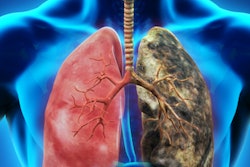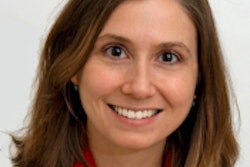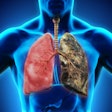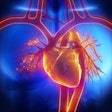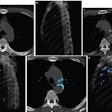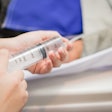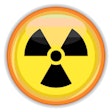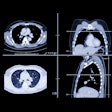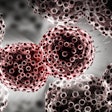Members of a Medicare advisory panel expressed a range of doubts about the benefits of CT lung cancer screening in a meeting on April 30 in Baltimore, giving screening low confidence scores. The question now becomes how the mostly negative panel meeting will shape the debate about Medicare reimbursement over the next six months.
The U.S. Centers for Medicare and Medicaid Services (CMS) convened the meeting of the Medicare Evidence Development and Coverage Advisory Committee (MEDCAC) to review the evidence behind CT lung cancer screening. The low-confidence vote came despite solid evidence from the National Lung Screening Trial (NLST) that screening high-risk individuals with CT yielded a 20% mortality gain compared to chest x-ray screening, as well as a thumbs-up from the U.S. Preventive Services Task Force (USPSTF).
Backers of CT lung screening believe the low scores reflect the sentiments of a panel that had little experience in medical imaging and state-of-the-art CT technology. Some have also questioned the directions given to the panel, as well as an "inflammatory comment" made by the panel's chair concerning the radiation dose that would be used in follow-up scans.
Raising questions
MEDCAC panelists raised questions about everything from mortality reductions to cost to a lack of standardized CT lung screening protocols. The panelists expressed their lack of confidence in the benefits of screening through answers to three questions, graded on a five-point scale in which 5 represented the highest level of confidence in the question and several subquestions.
Scores were as follows:
- How confident are you that there is adequate evidence to determine if the benefits outweigh the harms of lung cancer screening with low-dose CT? Mean score of 2.2222.
- How confident are you that the harms of lung cancer screening with low-dose CT if implemented in the Medicare population will be minimized? Mean score of 2.3333.
- How confident are you that clinically significant evidence gaps remain regarding the use of low-dose CT for lung cancer screening in the Medicare population outside a clinical trial? Mean score of 4.4444.
Leading questions
The voting questions seemed to bend toward "no": Obviously, there are always gaps in clinical evidence, and Medicare beneficiaries were only a subset of participants in NLST, representing about one-quarter of the more than 50,000 screening subjects. All of the meeting participants agreed that gaps exist in the evidence of screening's efficacy in the Medicare population, especially outside of clinical trials.
Still, Dr. Ella Kazerooni, professor of radiology at the University of Michigan and chair of the American College of Radiology's (ACR) lung cancer screening committee, said she was taken aback at how the panelists were told to vote.
"It became pretty clear ... they were instructed not to take into account any of the kinds of programs that were in place to ensure quality standards, like the ACR's CT accreditation program," Kazerooni told AuntMinnie.com. "They were instructed to consider the questions in kind of a vacuum."
Even as a chorus of clinicians spoke of strong evidence of screening's benefits in NLST and other studies "and believed the harms were reasonable and appropriate to the task at hand, the panel was focused completely on the harms and not the benefits," she said.
Some of the misunderstandings among MEDCAC panelists were significant, according to Kazerooni. For example, several noted that in NLST, more patients suffered complications from screening than had their lives saved. But most of these "complications" were not significant, and the panelists didn't mention that virtually all of the complications at workup from screening occurred in patients who had lung cancer.
"For the people who did not have lung cancer, which is the majority of those getting screened, there were no excessive harms," she said. "It was disturbing to note that many on the panel presented outdated information to make their case and were not aware of state-of-the-art information from screening trials, from thoracic surgery programs about the harms related to lung cancer screening."
How much radiation?
Over the course of the day, several panelists seemed to overestimate the risk of radiation exposure. In particular, panel chair Dr. Rita Redberg, a cardiologist from the University of California, San Francisco, suggested that follow-up CT scans showed such wide variability -- delivering as much as 15 mSv of radiation -- that the radiation exposure from screening and follow-up simply could not be predicted with any certainty in the real world.
During later discussions, Dr. Art Sedrakyan, a panelist from Weill Cornell Medical College, cited Redberg's 15-mSv scan estimate as a key reason he expressed a lack of confidence in the ability of CT's benefits to outweigh its harms.
"That kind of inflammatory comment was inappropriate from a chair of a MEDCAC panel," Kazerooni said of Redberg. "I would have expected the chair ... to be more balanced, but many of her comments, that one in particular, were not."
Adding to the day's tasks, it's hard to convey accurate messages about radiation exposure to a group that has little experience with medical imaging.
"They are not conversant in the field of radiation exposure the way radiologists and radiation oncologists are," Kazerooni said.
She warned that denying Medicare coverage could create a two-tiered system for high-risk individuals who want CT lung cancer screening.
"The ACR and the organizations that were present today were unanimously behind the physicians wanting to seek coverage for Medicare patients so that there's not a two-tiered system for under- and over-65-year-olds, given that the Affordable Care Act will be covering this for everyone under 65, and it would be detrimental to Medicare beneficiaries if Medicare were to decide otherwise," Kazerooni said.
Panelists and pushback
Among the comments heard during the day, panelist Dr. Steven Woolf, a professor of family medicine and population health at Virginia Commonwealth University, said he couldn't see how the USPSTF panel came up with a "good" recommendation for CT screening based on NLST data.
Having spent six years examining all the lung cancer screening evidence presented, "It would not have received a 'B' recommendation -- it would have gotten an 'I' [incomplete] or maybe a 'C,' " Woolf said, yet USPSTF concluded that the benefits minus the harms were still substantial. However, USPSTF was satisfied with NLST, in which only 25% of participants were of Medicare beneficiary age.
"In terms of context, other major cancer screening tests have been the subject of multiple randomized, controlled trials; we have never relied on a single trial to set policy on screening," Woolf said.
NLST data show a total of 83 deaths averted from lung cancer screening, but also unknown amounts of anxiety, 10,246 imaging exams, 322 biopsies, 671 surgeries, 228 complications, and eight major complications, as well as 16 iatrogenic deaths, he said.
"Whether that represents a close call or leaning toward a benefit we could discuss, but I don't see how you come away from that ... with a substantial net benefit," Woolf said. "Add to that the harms we're facing with an older population."
Weill Cornell panelist Sedrakyan questioned why mortality improvements in older individuals who underwent screening in NLST weren't higher if they truly had higher prevalence of lung cancer. "We're not seeing that in your estimates," he said, as the available data show roughly equivalent mortality reductions in individuals both older and younger than 65.
Lung cancer researcher Paul Pinsky, PhD, from the U.S. National Cancer Institute noted that older adults do have a higher prevalence of lung cancer, as evidenced by the lower number needed to screen (NNS) to find a single cancer in the older age group -- 245 versus 360 in those younger than 65. Moreover, Pinsky said, NNS figures take into account the underlying mortality rate, but inasmuch as older individuals have fewer years to live, "for each life saved you're saving less years of life."
Dr. Peter Bach of Memorial Sloan Kettering Cancer Center agreed with Pinsky's account. The available data show that the 20% mortality reduction "seems fairly robust" across age groups overall, he added.
Panelist Dr. Jeffrey Rich, a cardiothoracic surgeon from Mid-Atlantic Cardiothoracic Surgeons, voted "3" on the five-point scale for the question of whether harms from screening could be minimized. Increasing experience and better technology mean "we're learning to handle nodules," he said. "There's a learning curve, and the harmful side will diminish over time."
Considering that 96% of positive screening subjects don't actually have cancer, it's hard to imagine how clinicians might formulate a better stratification system for positive results, said panelist Dr. Curtis Mock from UnitedHealthcare. Take a smoker in the 66- to 80-year age range with comorbidities who now gets a false-positive screening result and a subsequent workup. "A patient at age 45 has risks; a patient at 66 has additional risks that are quite significant," he said.
ACR's Kazerooni countered that there is increasingly less need for workup of positive results, especially now that the Lung-RADS system is available to stratify findings. With Lung-RADS, only one in 10 individuals with a positive screen will require a biopsy, she said. However, panelist Redberg said there currently are no data to justify that assertion.
In her closing comments, panelist and American College of Surgeons member Dr. Jo Carol Hiatt from Kaiser Permanente said that suggestions of large radiation exposures and significant harms from follow-up scans heard frequently during the panel discussions were unfounded.
Radiologists are adept at administering low-dose thoracic CT protocols, regardless of their busy workflow, Hiatt said. Scans are protocol-driven and the doses are low, and it doesn't matter what kinds of scans may be acquired before or after low-dose chest CT.
Still optimistic
For her part, Kazerooni said she is undaunted by the initial vote. She believes there will be plenty of opportunities to correct the record before CMS makes a national coverage decision on CT screening for lung cancer.
"Between now and then there is a lot of ongoing dialogue that will happen," Kazerooni told AuntMinnie.com. "We have the opportunity to give them additional information to make sure that things that were not presented well today by the panel can be clarified."
Just as important, she said, all the groups present at the meeting, from the ACR to the American Cancer Society, the National Cancer Institute, and the Lung Cancer Alliance, and more "will continue to work toward a positive decision for Medicare beneficiaries."
MEDCAC will use the panel discussion as one of its information sources when it publishes its formal recommendations to CMS in November. At that time, there will also be a second public comment period to discuss the recommendations.





